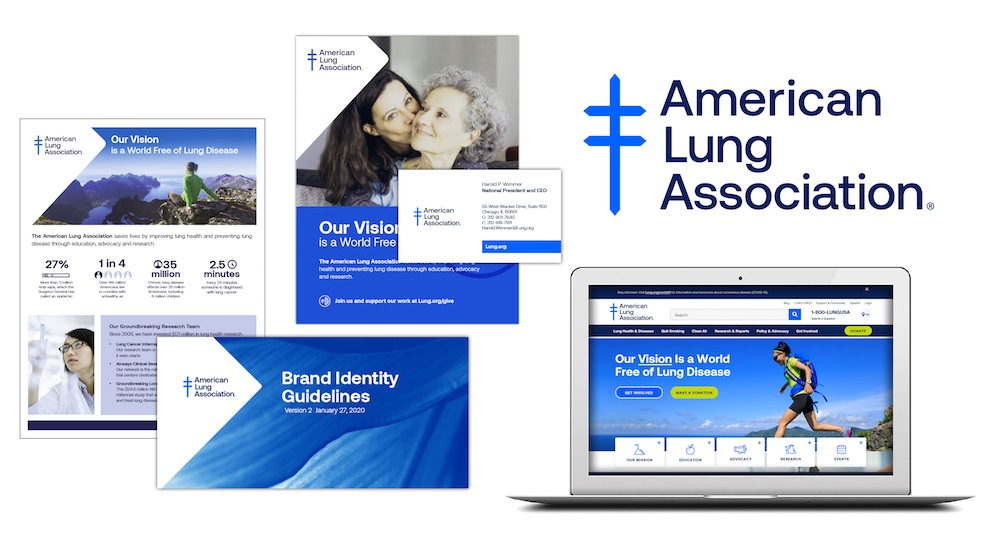Over the past several weeks we have looked at ways to leverage your brand and your marketing strategy to achieve growth for your business as the market tries to recover during the pandemic. We tackled these issues with a series of webinars focused on “Back to Business.” Our first webinar looked at how to leverage your brand to mobilize your internal teams and create a cohesive vision. Next we covered what to do if your business is only surviving – how do you achieve growth. Our third webinar discussed businesses that are thriving and how to capitalize on that current growth. Throughout the whole series we continuously refer back to your brand asking the questions – “are you staying true to your brand promise, and does that promise need to change?”
Our final Back to Business webinar (available next week) focuses solely on branding and why now may be the perfect opportunity to take a close look at your brand and make a change.
There are two reasons you may be considering changing things up in your brand right now. The first is you may be considering a change in spite of the pandemic, which is the topic of this blog. In my next blog, I’ll discuss the second reason you may be considering a change, which is whether you should consider a change because of the pandemic.
Re-Branding in Spite of the Pandemic
Every year hundreds, if not thousands, of organizations change their branding. It may be a small adjustment to the design, messaging, trade dress or even logo. All of these are brand signals which drive people to a better understanding of the brand promise. A far fewer (but still somewhat significant) organizations will actually change the core of what their brand stands for in an effort to change their audience’s perception of what their brand IS.
If your company was one of those planning a shift (or dramatic change), you may have decided to pull the plug on the rebrand “until this whole thing blows over”. If you have been watching our webinars, you know one thing we are telling our clients is that there will never be a day when we will wake up and everything will have changed back to normal as quickly as it changed in this year’s first quarter. What you should expect is a gradual change instead of an immediate change with some things returning to pre-COVID methods, but quite a bit never going back. Waiting for that magic recovery moment will mean you are missing the opportunities happening right now.
Breathing New Life into a 100-Year Old Brand
When the American Lung Association started their rebrand in a pre-COVID world, they had a systematic plan. When COVID hit they had a choice to make. This thought from an interview with their CMO Julia Fitzgerald by Drew Nessier puts it into perspective.
“When it started becoming obvious that the coronavirus crisis and our brand launch were on a collision course, the thought was, well, do we go ahead with our old brand? Do we present ourselves to not just thousands, but millions of new people, new constituents, new citizens in our old dress, or do we put on who we plan to be for the next 100 years and greet them as such?”
This decision to push forward was a great strategic choice given the nature of the disease. The rebrand itself was a chance to give new meaning to a mark that was over 100 years old. This new message gained new relevance in the wake of the pandemic. Again, from Fitzgerald:
About 100 years ago when American Lung Association decided to eradicate tuberculosis, they adopted this double-barred red cross from the Crusades as a symbol of a “crusade against tuberculosis.” Now, go figure, iconography that supports a crusade is not as popular today as it used to be. But even more germane, is that, even as an organization, we didn’t imbue that emblem with any meaning. With our refresh, our mark now has symbolism to us. The first bar in the cross stands for “education,” the second for “advocacy” and it’s held together with “research.” Even as we show our brand, every time we look at it, it reminds us of what is core to us.
The decision to move forward with the new branding actually makes the century-old organization feel as if it is shifting to meet a very acute need even as it prepares for the next 100 years. It also points to one potential opportunity you may be missing if you hit pause.
Right now, more of the world is living online than ever before. With limitations still looming on physical contact, people are broadening their horizons online. For many this means looking at new things. In B2B, geographic boundaries are falling, and companies are looking for partnerships on a broader scale. All this to say the audience for your rebranding is in a more focused space to hear your story. Many are looking for a new reason to count you in or out and a change in brand message or vision may be the story that puts you back on their radar.
Things are changing. More and more companies and brands that feel like they are changing with the times are seen as being more responsive. This is supported by data from the Edelman Trust Barometer Special Report on COVID showing that 41% of consumers tried a new brand based on how it responded to the pandemic. Instead of being lost in the fray, if your brand update isn’t presented as solely self-serving (which hopefully it isn’t in the first place) it will be seen as a company evolving to meet an evolving world.
A Shift in Purpose to Serve a Growing Audience
Another great example of rebranding in spite of the pandemic is the country’s oldest flour company, King Arthur Flour. In fact, the Vermont-based company saw a significant increase in their audience due to the baking craze spurred by what seemed like endless days at home at the beginning of the pandemic. Their name change to King Arthur Baking Company, complete with new logo and brand design, signified a shift in their mission to creating a community centered on baking. This is a perfect example of understanding the shift from old-school points of differentiation (how to be a better flour) and shows a change in purpose to a stronger concept that speaks to the needs of today’s unique buying tribe (how to support bakers). This creates a stronger sense of direction that can drive decisions on branding. The company also was swift to capitalize on the baking trends with content such as free recipes, two new YouTube shows and more. Design and logo change all reflected the goal to connect to a new, more online and younger demographic, despite its long history. This positioning shift makes King Arthur the trendier more modern brand than other flour brands which either position themselves weakly on a perceived quality or just own being a commodity item.

“King Arthur has always been a baking company at heart. The rebrand reaffirms our belief in the power of baking, and our commitment to inspiring bakers through every single touchpoint including our teaching and our products,” said Karen Colberg, King Arthur Baking Company’s co-CEO. “Our mission is rooted in building stronger communities, fostering the connections that come from baking and sharing. The new positioning as a baking company will enable us to continue to grow and welcome all bakers, from passionate life-long bakers to beginners.”
It must be working, because the company saw an incredible 2,000% increase in sales (yes you read that correctly), and yet were able to “rise” to the challenge. They could have just as easily said “things are changing now, we should offer our clients the stability of a brand they know and trust and make this move when things have quieted down.” The shift in thinking and approach to meeting an audience’s needs, instead positioned them as the go-to for baking, not flour.
Where to Start
The decision on whether you should or shouldn’t rebrand and when to do it is a big one. Preparing now means that you are ready to go when the time is right (even if that isn’t right now).
Our team helps clients navigate the questions surrounding a rebranding. Our approach analyzes changes in your audience, market, competition and offerings and is the foundation for a strategic plan that supports a minor tweak, a bigger shift or a complete change to your brand. We also listen to the cues in the marketplace to help you know when the best time is for launch. Give us a call to discuss how your brand is responding to the changing times.
In my next blog, we’ll look at how to determine if you should rebrand because of the pandemic, and what you should be looking at to determine if your brand is still speaking to your audience. Check out the first three webinars in our series here. Our fourth webinar in the series that will give even more insight into shifting your brand, will be available soon.



